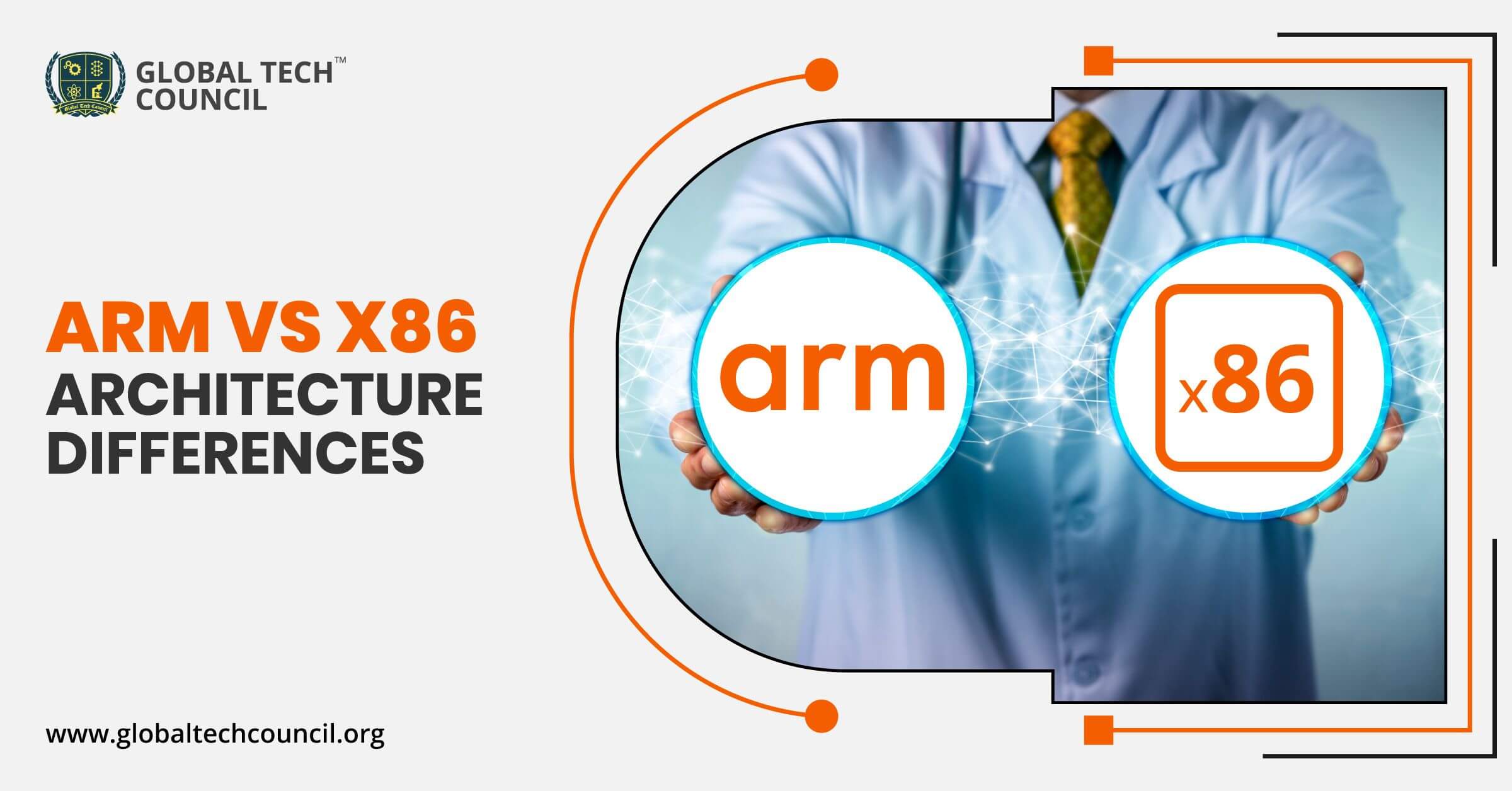Three different types of the processor can run on Android: Intel, MIPS, and Arm. While the MIPS processors for phones haven’t been seen for years, Arm is the newest CPU architecture used by most modern smartphones in both Apple and Android devices. While Intel has been in the picture for a long, Arm processor is making its way into the market with products like Apple’s custom CPU for Macs and Windows on Arm. In this article, we see that the scope of X86 and ARM as a future technology. Read on to know about the Arm vs. x86 war that has been heating up big time.
The knowledge of the architecture of the system they are working on is essential to an IT professional. If you wish to dig deeper, you should check out professional certificate programs.
Introduction to Intel x86 and ARM
The Central Processing Unit or CPU is the brain of the device but not necessarily smart. It is a component that works as per the given instructions called the instruction set. The instructions tell the processor to move data between memory and registers or perform a specific calculation using an execution unit. Different CPU hardware blocks require different instructions. The complexity and power of CPUs depend on the instructions. Thus, for a low power CPU, a simple instruction set is paramount. High-performance CPUs are possible with complex hardware at the expense of power. The approach to CPU design is a fundamental difference between Intel and Arm. x86 targets peak performance while Arm processors aim for better energy efficiency. Today, we have 64- bit architectures in use for PCs and smartphones. Phones made this transition in 2012 but didn’t change the way devices were used. Today the 64-bit architecture is more prevalent in smartphones. Intel coined the term x86-64 for PCs using 64-bit architecture but was instead announced by AMD in 1999.
ARM is Reduced Instruction Set Computing (RISC) based, while Intel (x86) is Complex Instruction Set Computing (CISC) based. The Arm’s CPU instructions are reasonably atomic, having a close correlation between the number of micro-ops and instructions. However, CISC offers many instructions, and a lot of them offer multiple operations such as math, data movement, and optimization. However, complex instruction leads to more power consumption but provides better performance. In 2011, the ARMv8 64-bit architecture was introduced by Arm. Arm offers a clean 64-bit implementation rather than extending its 32- bit instruction set. For this, ARMv8 architecture uses two execution states, AArch64 and AArch32- one for running 64-bit code and the other for 32-bit code. The ARM design lets the processor seamlessly swap from one mode to the other while executing normally. This means that the 64-bit instructions’ decoder is a new design that remains backwardly compatible but doesn’t need to maintain compatibility with the 32-bit era.
ARM architecture vs. x86
- Processing Power
In ARM processors, as the instructions are simple, the circuitry requires fewer transistors, resulting in smaller chips or more chip space, due to this. ARM processors integrate many peripherals, including graphic processing units (GPUs), allowing computers like the Raspberry Pi to have so few components. Simple instructions mean more instructions are required to do tasks. Thus, longer execution times and more memory consumption. ARM processors make up for the increased execution with pipe-lining and faster processors. Intel x68’s instructions are more focused on performing complex tasks with great flexibility. ARM processors require the program to load variables into registers before operating. However, x68 can perform operations between registers, between a memory location and a register, and even between memory locations. Other joint operations are single instruction loops, memory searches, barrel rolls, and much more.
- Power consumption
Power consumption is one of the essential criteria in embedded designs. A mobile design may be wholly dependent on power management, but a system designed to be connected to a power source can typically ignore power constraints. ARM cores’ typical consumption is less than 5W with many packages, including peripherals, memory, and GPUs. This small power dissipation is only possible with fewer transistors at relatively low speeds. But the complex operations take longer because of performance efficiency. Intel cores consume a lot more power due to their complexity. A high-end I-7 can consume as much as 130W of power, whereas mobile Intel processors consume 6W to 30W power.
The low-power consuming processors designed for laptop use don’t integrate graphics into the processor, whereas the mobile versions do. At the same time, those which integrate graphics result in smaller throughput and significantly lower clock speeds.
- Software
Both x86 and ARM are much used to compare software availability and toolchains. The advantage of ARM-based designs is that running operating systems are designed for mobiles such as Android. Intel-based devices’ advantage is that any operating system can run on a standard desktop PC, including Linux and Windows. Both devices can run the same applications as the application compiled in virtual machines relying on language like Java. ARM-based systems are limited in terms of the operating system as most operating systems are written for x86-based computers. Raspberry Pi OS and some Linux distributions exist for ARM. Because of its increasing popularity, Microsoft released a slimmed-down version of Windows 10 known as Windows 10 IoT Core, which can run on ARM processors.
Conclusion
The architectural differences discussed in the article briefly explain the current issues and successes faced by the two chip behemoths. Arm’s low power approach is perfectly suitable for the 3.5W Thermal Design Power(TDP) mobile requirements, yet the performance scales up to match Intel’s laptop chips. On the other hand, Intel’s 100W TDP typical Core i7 is very successful in high-performance desktops and servers but struggles to scale down below 5W. A high-performance architecture is advantageous to everyone from a machine learning expert to the Internet of things expert. Sign up for one of the professional certification courses to boost your career today!
